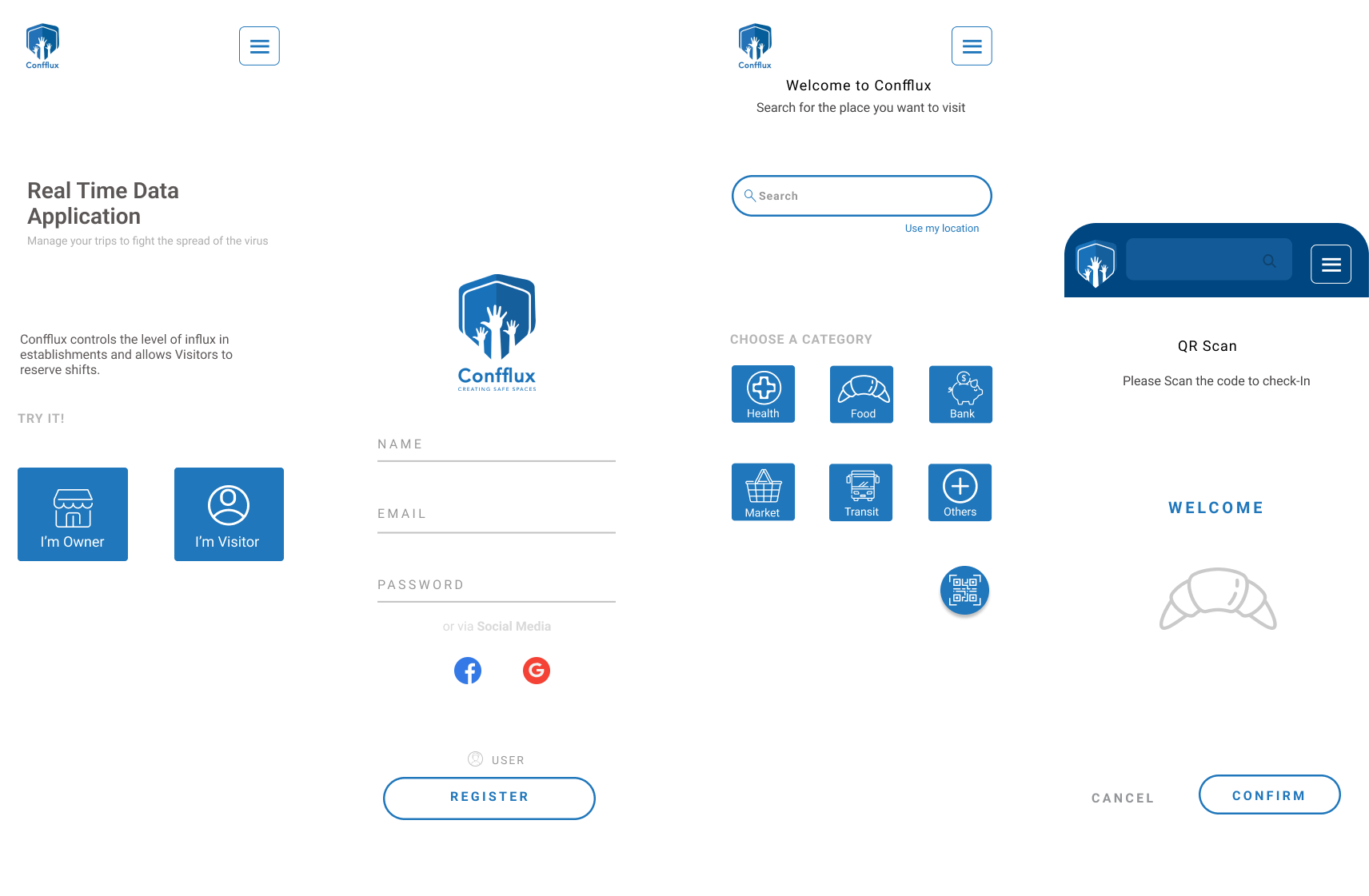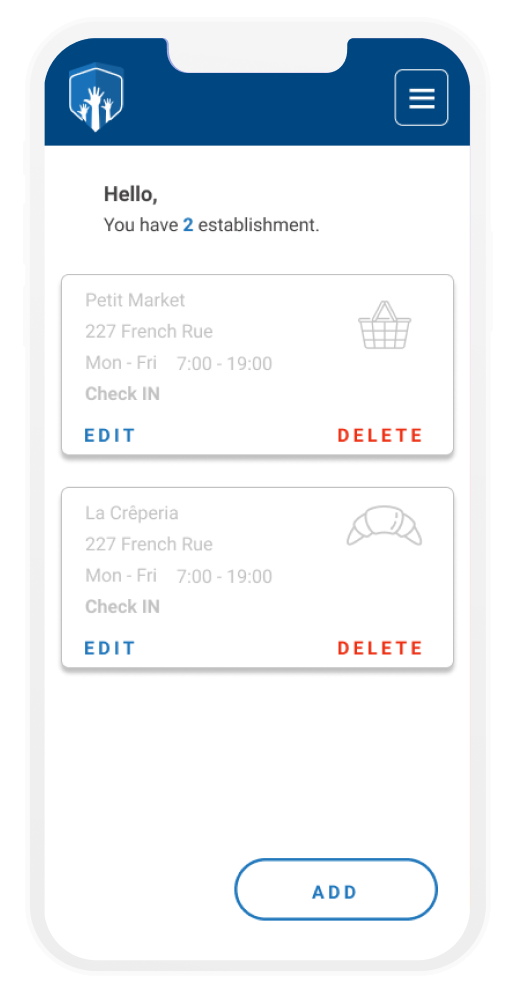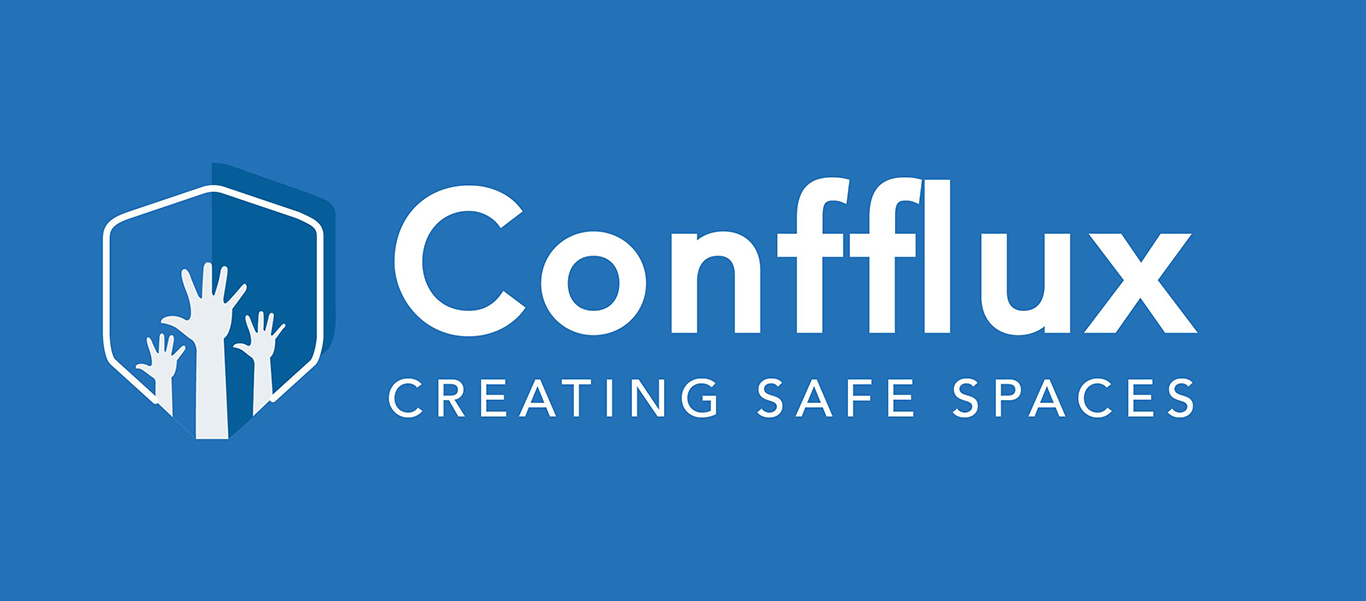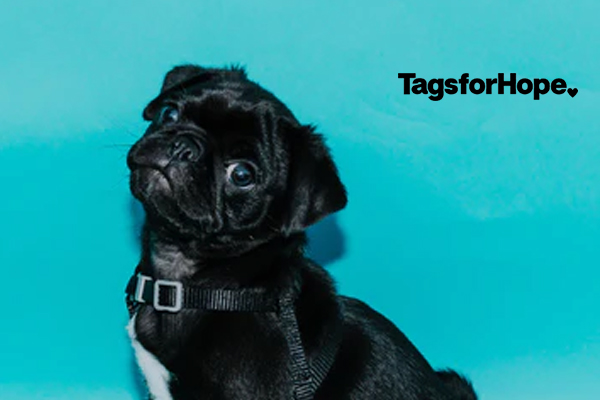CONFFLUX
Type : Mobile App, Marketing PageClient : ConffluxRole : Product Designer, Visual Design, Prototyping, Marketing- Confflux
Description
OVERVIEW
With this world's new situation a young group of engineers and scientists from Europa and Latin America, got together
THE CHALLENGE
Create an app for establishment owners and users to book a place and make a digital queue, avoiding big groups of people in one place.
The virus came and everybody had to stay at home, only one person was allowed to go out but what if there was a large line or too many people in just one place.
The Process
DESIGN PROCESS
1. Empathize : Research, User Persona.
2. Define : Research Analyze, defined the user and creating the problem statement.
3. Ideate : User Flow, low-fidelity wireframe.
4. Build : Wireframes, visual brading, protyping.
5. Test : Run an guerrilla usability test.
EMPATHIZE
RESEARCH


TARGET USER, RESEARCH AND FINDINGS
THE PROBLEM
Social‐distancing restrictions and health and economic‐driven demand shifts from the virus are expected to shutter many small businesses and entrepreneurial ventures. We found out that during the lockdown businesses were hurting for the lack of customers being afraid of getting into a big line or a big crew. We made research between March 28 and April 4, 2020, to see the impacts on the economy focusing on startups, and small businesses with no digital precense, and found that business owners suffered a large drop of 36% in business activity, Construction, restaurants, hotels, transportation, and personal/laundry services all faced large declines in the number of active business owners.
We need to avoid crowds but still help a business to keep selling, and with such a little amount of time, we were able to see what the owers needed it to keep track of the people coming into their business and to help costumers being safe and continuing their lives in this new reality.
Data Source: Fairlie R. The impact of COVID-19 on small business owners: Evidence from the first 3 months after widespread social-distancing restrictions. J Econ Manag Strategy. 2020 Aug 27:10.1111/jems.12400. doi: 10.1111/jems.12400. Epub ahead of print. PMID: 32904856; PMCID: PMC7461311.
THE SOLUTION
During the pandemic, small businesses and big places recognize the immense potential of using location and mobility data to prevent the spread of the virus, while enabling the gradual lifting of lockdown measures that are hurting the economy.
LOW FIDELITY WIREFRAMES
We began designing low-fidelity wireframes for the main flow once the flow diagram was established.

FINAL MOCKUPS
We wanted a simple app that was easy and intuitive to use, so people with low-tech abilities were able to know how they work.

THE STYLE GUIDE

USABILITY TESTING
Since this was a small project we conduct a small guerrilla testing with people and small business near us.This was tested among 5 users, The tasks were simple, as a owner create an establishment and as a user was book a place.
RESULTS
After this test. We found that 100% of the users were able to create a establishment with no problem. As user we had 86% of users to book a place with no problem. We asked the participants to rate the prototype in objective measures including: Easy to use, difficulty to keep the track of location in the app, The learn ability if it was easy to use it, and the information facilitation, how quickly they found the information.

ACCESSIBILITY
To enhance accessibility, we decided to use a contrast ratio of 4.75:1. We made added a multi-language functionality that allows users to switch languages within the app, in English, Spanish and French, since this was target to a European and Latinoamerican people. With the accessibility in mind we have a large text defined as 14 point (typically 18.66px) and bold or larger, or 18 point (typically 24px) or larger. Proof in the webaim page.

TAKEAWAYS
This was a remote project with people around the world, we wanted to do something to help the world's situation. As a solo designer in a group of only engineers I learnt to guide and manage a project, also to put in practice communication, trust, and teamwork. Also creating marketing elements to make is get known.





